Does bath time turn into meltdown time in your house? You’re not alone. My son, Hayden, has autism, and when he was young, bath time was a sensory battlefield. The sound of the running water and the feel of it touching his face was too much for him. Back then, there were no online resources, Facebook groups, or other parents I could reach out to for help. So, I got creative and found ways to make bath time a splash.
How to Get an Autistic Child to Take a Bath
Here are a few strategies to turn bath time into a calming, fun routine for your child with autism.
- Gradually introduce water into their routine
- Establish a transition routine before bath time
- Create a relaxing and predictable environment
- Redirect attention with bath toys
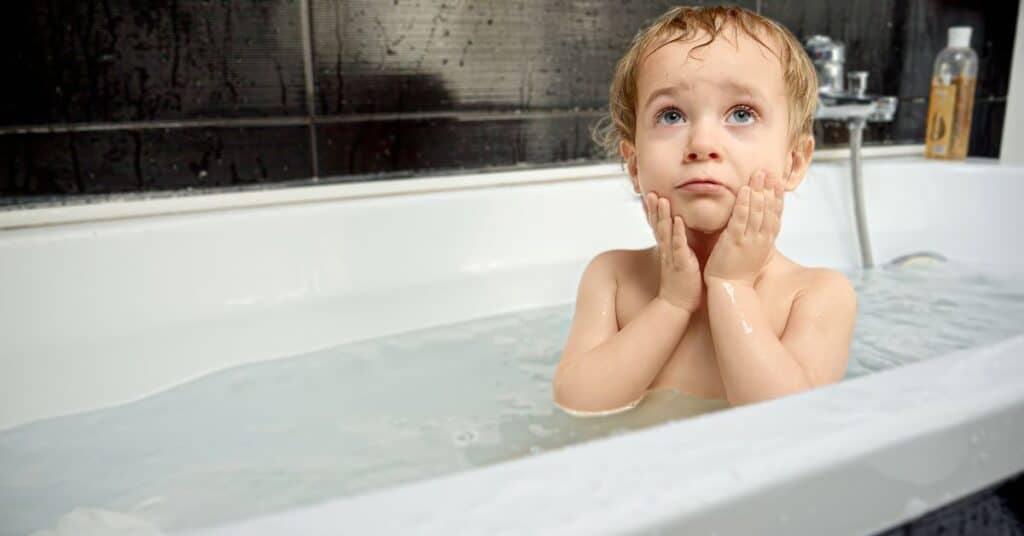
Why Does My Autistic Child Hate Baths?
There are many reasons why your child with autism may not like baths. A common reason is sensory overstimulation. Every child responds differently to stimuli. Bath time has many sensory experiences that may overwhelm a child with autism.
Here is a list of possible triggers that may cause meltdowns:
- The feeling of wetness
- The sound of rushing water
- Water temperature
- Water pressure
- Showerhead setting
- Lighting
- Scented bath products
- Soap textures
- Head sensitivity
- Water in eyes
- Sensation of water on face
- Water depth
- Discomfort with undressing
- Claustrophobic feelings in bathtubs
Another factor that could make a child with autism dislike bath time is water’s unpredictability. Children with autism may not understand how water moves and splashes, and that unpredictability can make them feel insecure.
If bath time is not a consistent routine with predictable steps, children with autism can struggle to transition from regular activities to bath time.
Addressing these concerns can make bath time a more positive experience for your child. Here’s how:
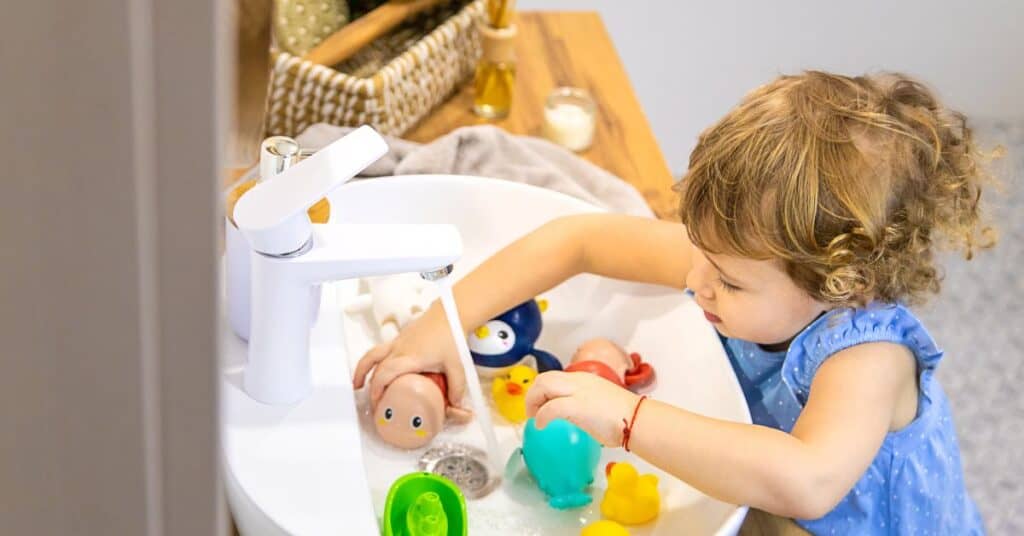
1. Gradually Introduce Water Into Their Routine
One of the first steps to getting your child to take a bath is to familiarize them with the feeling of water. A great way to introduce them is through sensory bins.
How to make a sensory bin:
- Fill a bucket with water
- Add fun toys
- Slowly get your child used to immersing their hands in the water
This form of play can gradually lead to positive associations with water, making the transition to bath time easier.
Another strategy is to give your child a sponge bath or use warm, wet washcloths. Some children struggle with the sensation of running water on their skin, and using a sponge or washcloth can help them slowly get used to it.
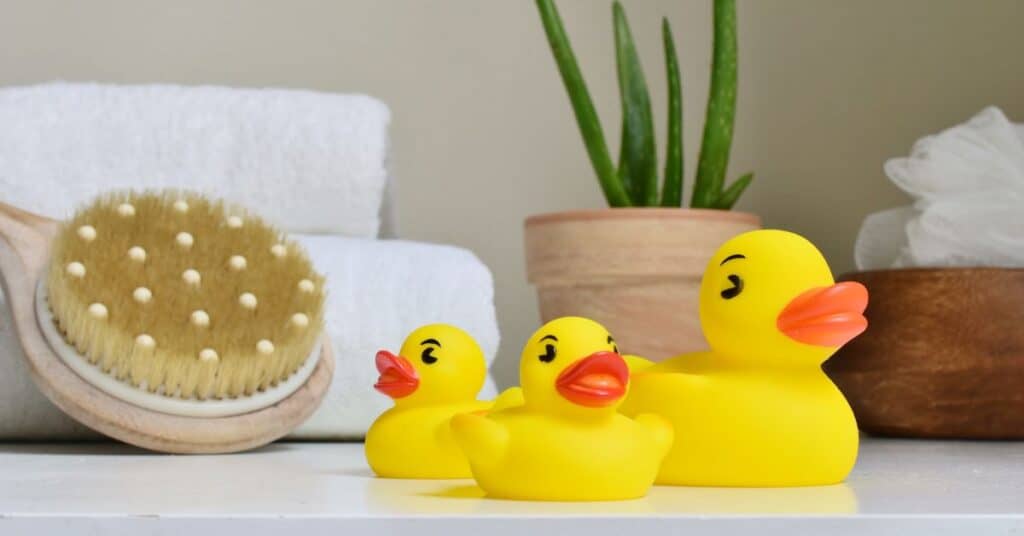
2. Establish a Transition Routine Before Bath Time
Children with autism often struggle with transitions, including transitioning to bath time, where they are outside of their ordinary environment.
Consider trying these strategies to help your child with autism transition to bath time:
Use Visual Cues
Visual cues can help children mentally and emotionally prepare to transition to new activities.
Here are a few items you can set out to help your child feel prepared for bath time:
- Towel
- Special soap
- Bath toys
When my son was young, I set out yellow rubber ducks and his bath toy basket where he could see it. He knew I would mention bath time soon, so it was a visual queue before I even said a word. He never saw the ducks or basket any other time.
The transition may be easier if there is a specific, designated basket of items your child can associate with bath time. This sturdy basket on Amazon allows the toys to dry quickly and can easily be moved out of sight when it’s not bath time.
Use Auditory Cues
Another strategy is using auditory cues. Auditory cues can allow your child to feel prepared before transitioning to bath time. Here’s how you can introduce auditory cues into your child’s bath time routine:
- Bath Time Songs: Create or find short, simple bath time songs. Sing these songs a few minutes before bath time to signal the transition.
- Timers: If your child responds well to timers, set a timer a few minutes before bath time to give them a heads-up and allow them to prepare mentally.
My son loved music, so I would sing to him during the day, making up lyrics to songs he knew and loved. The lyrics were my way of communicating that I was interacting in his world.
I would use songs to announce bath time. In this case, I would sing “Bath time, bath time. Bath time, bath time…yeah!” to the tune of the popular Nick Jr. TV show Dora the Explorer. Songs or storybooks (like this Sandra Boynton one on Amazon) about bath time can help create a smooth transition.
Songs about bath time or singing your own bath-time-related lyrics to a song your child likes can help create a smooth transition.
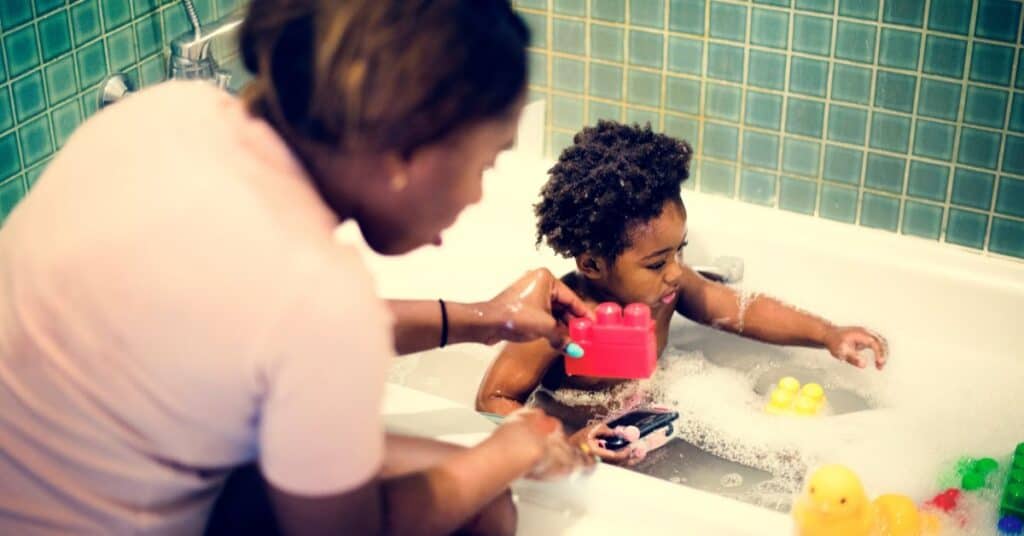
3. Create a Relaxing and Predictable Environment
Knowing what to expect can help a child feel secure, even if they don’t like taking a bath. A relaxing and predictable environment helps children feel safe, especially autistic children.
Here’s how you can help your autistic child feel safe in the bathroom environment:
- Fill the tub before your child enters the bathroom
- Experiment with water pressure and temperature
- Create a sensory-friendly environment
Fill the Tub Before Your Child Enters the Bathroom
The roaring sound of the bathtub filling can send some children with autism into sensory overload. This was the case with my son. One strategy that helped immensely was ensuring I filled the bathtub before he entered the bathroom. This strategy eliminated the auditory sensory overwhelm.
Experiment with Water Pressure and Temperature
When filling the bathtub, ensure the temperature is right for your child. Every child has different temperature preferences, but starting with tepid water is a good rule of thumb.
Consider allowing your child to test the water’s temperature. Maintaining a consistent water temperature throughout bath time is also essential to many children on the autism spectrum.
If your child struggles with the auditory processing of the water pressure, advise them to cover their ears before adding warm water or fill a container in the bathroom sink to reduce the noise.
Create a Sensory-Friendly Environment
An essential step to creating a relaxing, predictable environment is ensuring the bathroom is sensory-friendly. A sensory-friendly bathroom can include calming sensory items such as extra-soft towels and unscented body wash. Eliminating overstimulating items like bright lights and powerful scents can promote a calm, relaxing environment.
Consider eliminating the following items:
- Bright lights
- Loud bathroom fans
- Music or loud noises
- Scented products
If you’re looking to create a sensory-friendly bathroom and don’t know where to start, here’s a little shopping guide to help get you started:
- CeraVe’s Baby Wash & Shampoo (perfect for kids with sensitive skin and olfactory sensitivity)
- Ulta Soft Hooded Towel
- Dimmable Smart Light Bulb
- Multicolor Smart Light Bulb
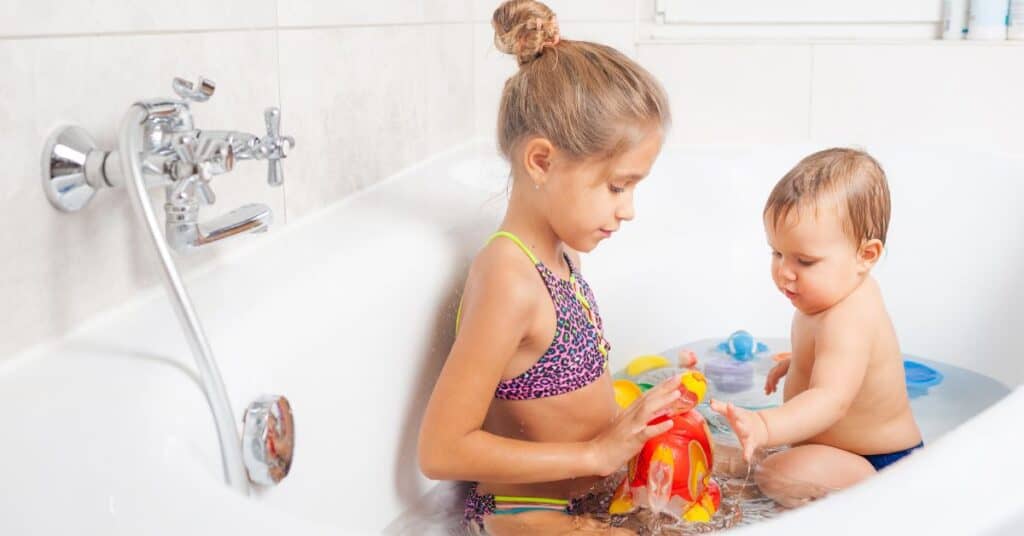
4. Redirect Attention Through Bath Toys
Another game-changing strategy is using bath toys to encourage your child into the bathtub and inspire them to enjoy a new form of playtime.
A squirt toy was one of the best bath toys I got for my kids. A fun toy that predictably squirts water can allow children to direct where the water will go, giving them a sense of control. I had my kids take turns squirting each other with water during bath time.
This toy taught my son to anticipate the water playfully approaching him. Then, he felt empowered when he got to direct the water to get his sister. Not only did this help him gain a sense of control, but it also helped him to accept splashes of water.
Hayden also enjoyed bath instrument toys. Since he communicated through music, giving him bath instruments (like a bath xylophone) enabled him to express himself and made bath time more manageable.
You can make bath time a splash with these fun bath toys:
Understanding what can overwhelm your child is essential to making bath time enjoyable. Consider eliminating potential overstimulating elements before adding calming products.
Every child with autism is unique, and what overwhelms one child may not affect another. Experiment with the strategies suggested in this article and discover what works best for your child.
